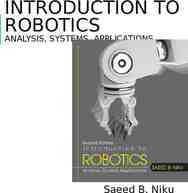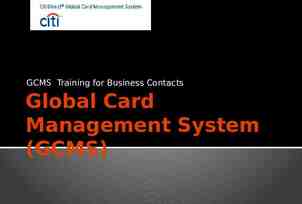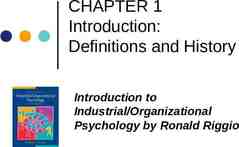WELCOME CLASS of 2013 COLLEGE INFORMATION NIGHT March 14, 2012 6:30 pm
34 Slides241.33 KB
WELCOME CLASS of 2013 COLLEGE INFORMATION NIGHT March 14, 2012 6:30 pm
The College Office (7S5) 718-804-6465 Rosemarie Mazzone, Director Diana Balsamo: Associate Director Adam Stevens, Scholarship & Financial Aid Coordinator Maryanne Bove, Secretary Carmela Maggi, Fee Waiver (7E2) Kathy Carosella, Fee Waiver (7E2)
Diana Balsamo Naviance & the College Process Homework Assignments & Meeting with your Counselor Newsletters, Upcoming Emails & Facebook College Related Events
Adam Stevens Paying for college Financial Aid FAFSA 4caster Net Price Calculators Scholarships BTHS Website Naviance
Rosemarie Mazzone College Office Website Bths.edu College Office Tab
The College Search How to find the right fit www.cuny.edu/admissions
The Right College What is the right college? Someone else’s choice? The college with the best radio station? US News & World Report’s #1? The college I can afford? Remember: The answer will be different for each student. www.cuny.edu/admissions
Making the Match It’s not about finding the best college It’s about finding the right college The right college is where students can be happy and successful. Successful students are happy and happy students are successful. www.cuny.edu/admissions
What is the first step? Self-Assessment: Discovery and Facing Reality Who are you? What do you want to do? What have you done so far? How hard have you worked in high school? How involved are you in the life of the school? What makes you special? College-Assessment: Narrowing the field Creating a working list and a final list. www.cuny.edu/admissions
College Selection There are more than 3300 colleges/universities in the U.S. alone Students generally apply to between 4 and 8 colleges Research and guidance help students narrow their lists www.cuny.edu/admissions
What factors should you consider? Geographic Location: proximity to home, weather and lifestyle Size and Diversity: student body, average class size and dorm life Academic Opportunities: what and how your will study Personal Opportunities: activities, jobs, internships and friends Reputation Student Profile: do you have what they want? www.cuny.edu/admissions
What will you do there? Do you have a career in mind? Are there specific majors that interest you? Is there depth and diversity within the academic programs? Can you change your major if you change you mind? Remember: College is a place to learn, explore and grow as a scholar and an individual. www.cuny.edu/admissions
What’s in the file? Transcript: A record of final marks for grades 9-11 and mid-year 12th grade marks SAT, SAT Subject Test, ACT, TOEFL and AP scores, if applicable Teacher recommendation forms/letters Personal Statement/Essay Application: Personal information, high school information, details of extracurricular activities Notes from campus/alumni interview Record of student contact www.cuny.edu/admissions
The Transcript Colleges look at the transcript as the best indicator of past performance and future academic potential. It includes: Student information including name, address, date of birth, social security number, if applicable. A complete record of the courses taken and grades received in high school, including summer school coursework, if applicable. SAT, SAT Subject Test, ACT, TOEFL and AP test results, if applicable. Colleges evaluate not only the grades received but also the courses taken and hope to see that a student has selected a challenging course-load. www.cuny.edu/admissions
Standardized Tests Standardized tests are the great equalizer because, unlike class work, every applicant has had the same test. Score Choice is a new score-reporting feature that gives students the option to choose the SAT scores by test date and choose SAT Subject Test scores by individual test that they send to colleges, in accordance with each institution’s individual score-use practice. Colleges and universities are interested in your best work, so they will generally use your best scores in the evaluation process. www.cuny.edu/admissions
Standardized Tests continued Prepare for the SAT and/or ACT. Evaluate your need for SAT Subject Tests Determine your eligibility for the TOEFL (Test of English as a Foreign Language) Remember: Be systematic. Set aside a specific time a few days each week Get a book or computer program to help you study Consider a private tutor, a prep course or an on-line resource Be aware of testing dates and deadlines so you can register for your tests on time www.cuny.edu/admissions
Teacher Recommendations Colleges and universities will often require one or two teacher recommendations. A secondary school report and counselor recommendation will also be completed. Students should select teachers from either the 11th or 12th grade who know them well. Recommendations are less valuable if they are written by a teacher from 9th or 10th grades. Remember: The letters provide a confidential picture of the student’s life in high school. Students can have an outside letter of support included in the file. www.cuny.edu/admissions
Personal Statement Start Early Plan & Brainstorm Ask for feedback from teachers and peers Write about what motivates you Write your statement so it reflects your personality Pay attention to spelling and grammar Ask yourself, “What do I want the reader to get out of it?” Ask yourself, “How do I stand out from other applicants?” www.cuny.edu/admissions
Activities Co-Curricular Activities (take place in school) Sports Clubs Community Service Projects Extra-Curricular Activities (take place outside of school) Jobs (including summer jobs) Athletic Leagues/Lessons Art/Music Lessons and Performances Independent Community Service Responsibilities at home www.cuny.edu/admissions
What makes a good list great? Self-Assessment: Discovery and Facing Reality Who are you? What do you want to do? What have you done so far? How hard have you worked in high school? How involved are you in the life of the school? What makes you special? College-Assessment: Narrowing the field Creating a working list and a final list. www.cuny.edu/admissions
Decision Plans Early Decision: admit, deny or defer Apply by Nov.1 or Nov. 15 Decision by mid-December BINDING if admitted Early Action Single Choice: admit, deny or defer Apply by Nov. 1 or Nov. 15 to one Early Action Single Choice college or university and no other early action or early decision college or university. Decision by mid-December NON-BINDING www.cuny.edu/admissions
Decision Plans continued Early Action: admit, deny or defer Apply by Nov.1 or Nov. 15 Decision by mid-December NON-BINDING Early Decision II: admit, deny or defer Apply by Jan. 1 Decision by Feb. 1 BINDING if admitted Regular Decision: admit, deny or wait list Deadlines can be as early as January 1 Many colleges and universities don’t use application deadlines www.cuny.edu/admissions
Resources The Public Library www.collegeboard.com www.myroad.com (fee service offered by The College Board) www.nacacnet.org (Nat’l Assoc. for College Admission Counseling) www.fastweb.org www.review.com (Princeton Review) www.kaplan.com www.number2.com (free online test prep) www.cuny.edu/admissions
Owning the Process Students apply to college and students are admitted. Students should take ownership of the process – right now. Students should do their own research, make their own appointments and fill out their own applications Remember: Every college and university on the list should be a school the student would happily attend. There are more than 3300 choices in the US, so there is no reason to apply to a school you don’t want to attend. www.cuny.edu/admissions
What is financial aid? Financial aid is money received to help pay for college. Cost of Attendance (COA) The total cost to attend a college/university for an academic year. Includes: tuition, room and board, fees, transportation, meals, books and supplies. Estimated Family Contribution (EFC) The amount of money a family is expected to contribute to a student’s education as calculated by US Federal Government. Financial Need COA - EFC Financial Need www.cuny.edu/admissions
When filing FAFSA, who is the parent? Custodial : Student lives with you more than 50% of the time and receives more than 50% of financial support Adoptive: Legal adoption via the family court Step-parent: You married the student’s parent Foster parents, legal guardians or other relatives do not supply their information on the FAFSA. www.cuny.edu/admissions
Types of Aid Available GRANTS (Money gift to student, not repaid) Federal Grants (Pell) Entitlement aid State Grants (TAP) SEOG College/University Grant Federal Work Study: (Money earned through employment) Work-study eligibility is noted on the award letter and generally used for living expenses. Student obtains a job on campus and gets paid an hourly wage. www.cuny.edu/admissions
Loans (money that must be repaid) Stafford Loan Subsidized :gov’t pays the interest on loan during in-school, grace, and deferment periods Unsubsidized: interest accrues during in-school, grace and deferment periods. Interest can be paid by student or capitalized. Offered to all students regardless of EFC Repayment begins 6 months after graduation or when the student stops attending college. Federal Work Study: (Money earned through employment) Gov’t regulated loan that parents can take to fund student up to cost of attendance minus any other aid. www.cuny.edu/admissions
Loans continued Private Loan Students are approved based on credit history May need cosigner Can borrow up to COA minus other aid Rate is variable Colleges certify the loan, receive the funds, then post to a student’s account. www.cuny.edu/admissions
Applications Free Application for Federal Student Aid (FAFSA) New York State Tuition Assistance Program (TAP) College Board (CSS) PROFILE www.cuny.edu/admissions
FAFSA Free Application For Federal Student Aid (FAFSA) Free federal application Bases on earnings for the prior year Available January 1st of each year Check with each college for their priority filing deadline. www.cuny.edu/admissions
TAP NY Residents @ NY Schools Can apply directly from FAFSA hyperlink or at TAP website www.hesc.org Must reapply each year Must complete a FAFSA prior Award range is 500- 5000 www.cuny.edu/admissions
CSS Profile Administered thru the College Board Used at select private institutions and private scholarship programs to assess financial need for determining awards (local colleges: Fordham, Barnard, Columbia) 25 initial application, 16 each additional school Fee waivers are available for first-time college applicants from low income families. Covers up to 6 records. www.cuny.edu/admissions
Useful Websites www.pin.ed.gov (FAFSA PIN site) www.fafsa.ed.gov (www.fafsa.ed.gov FAFSA on the Web) www.federalstudentaid.ed.gov (FAFSA 4caster) www.hesc.org (NYS Higher Education Services Corp.) www.cuny.edu/financialaid (CUNY) www.cuny.edu/admissions







































